SIX PLANTS TO PRUNE IN WINTER
Many larger plants benefit from pruning after flowering but some need special care and attention during the “off” season. The key to winter pruning is to look first, clip second.
A majority of our loving gaze is reserved for summertime, so winter’s nakedness can render our most beloved plants near strangers.
Reacquaint yourself with your bush, tree or perennial. Look at it from afar, squint, look at it from the side and note anything that seems lopsided. Get down on your knees and look up from under the tree. You’re looking for crowded areas, oversize branches and dead wood.
Once you’ve made a thorough assessment, clean your pruning shears or hand-pruners with isopropyl alcohol and get to work!
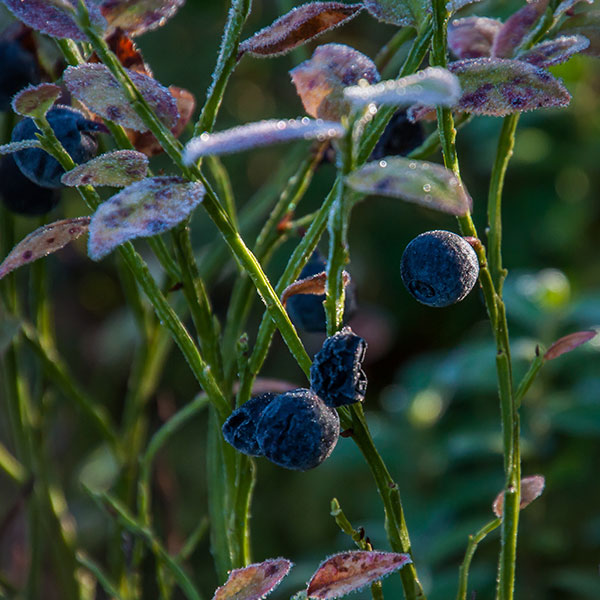
Vacciniums pp.
This Buds for You
Newly planted blueberries need time to settle in. Pinching off flowers during the first spring and summer sends energy to the roots. Prune mature plants in late winter when swollen fruit buds are distinguishable from growth buds. Clipping fruit buds means a smaller harvest, but with larger berries.
GROWING GUIDE: The ideal shape of a blueberry is open-centered and vase-like. Cut back any branches that grow into the bush or along the ground. It’s perfectly fine to prune out one-quarter of the bush annually. Blueberry bush branches are fruitful for about four years, after which they should be cut back completely to make space for younger branches and new growth.
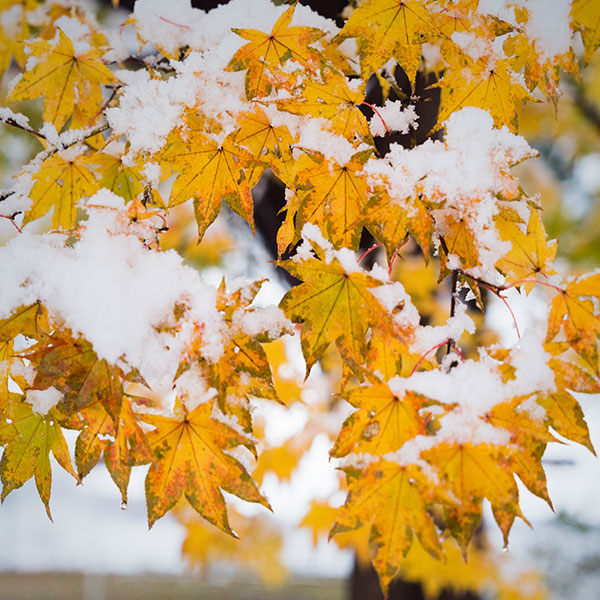
Acer palmatum
Think Sappy Thoughts
Like any Acer, upright-growing Japanese maples bleed sticky sap. Pruning in spring can leave weeping wounds and spell disaster for trees. Don’t be afraid of regular pruning, though. Japanese maples often bounce back from accidental over-pruning so long as the cuts heal.
GROWING GUIDE: The best time to prune is while the tree is dormant, before the sap begins to rise and before any leaves are on the tree. In winter, cut out any grey branches with no buds. It’s dead wood. Clip at the base any branch that crosses or rubs against another. Never remove more than one-fifth of a maple’s crown. To do otherwise can spur unwanted and unsightly growth.
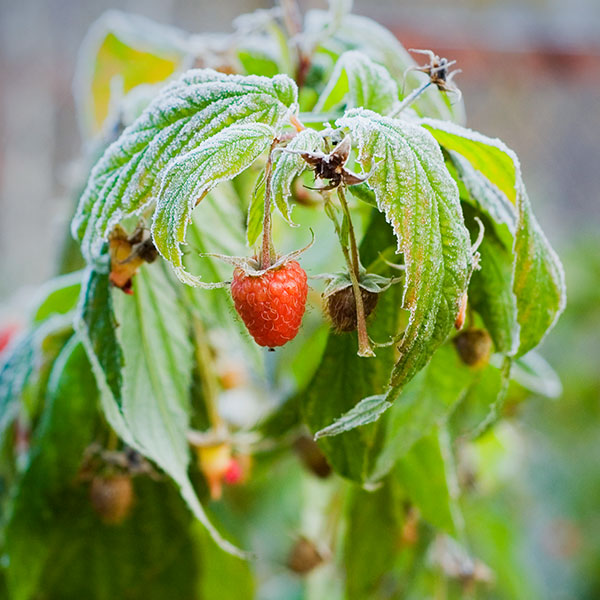
Rubus idaeus
Forever Young Canes
Summer-fruiting raspberries fruit on year-old canes. Once fruited, the old cane won't re-bloom. Trim previously fruited canes to the ground throughout summer. Provide support for new, young growth with string or a trellis. Late-winter is the best time to prune raspberry canes, even if you did—or didn't—prune in summer.
GROWING GUIDE: Trim to the ground any dead or weak canes, leaving only the strongest within four to six-inches of each other. Prune off the tips of any damaged canes. Beware, the tips are the most fruitful part of the cane because there the buds are more closely spaced.
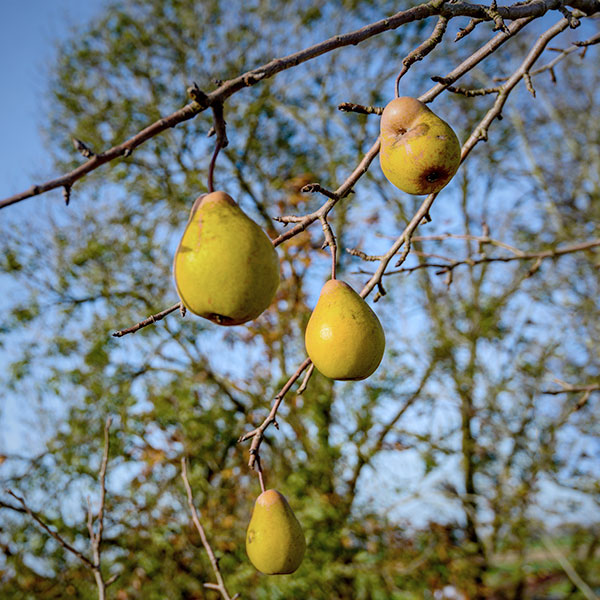
Malus sylvestrisvar. domestica& Pyrus communis
Hey, Nice Pear-Cut
More fruit and tastier harvests is all we ask from pear and apple trees. For these two, it’s easy to encourage both with a little late-winter haircut. The exception: tip-bearing trees. If fruit grows at the end of, and not along, branches, refrain from tip-pruning.
GROWING GUIDE: First, clear out dead or damaged branches, or ones that rub, cross or crowd out others. Then prune off old spurs, weak spur systems, and thin over-crowding. Lastly, trim back the outermost branches of the tree by one-third. This encourages growth that is stays stout and strong.
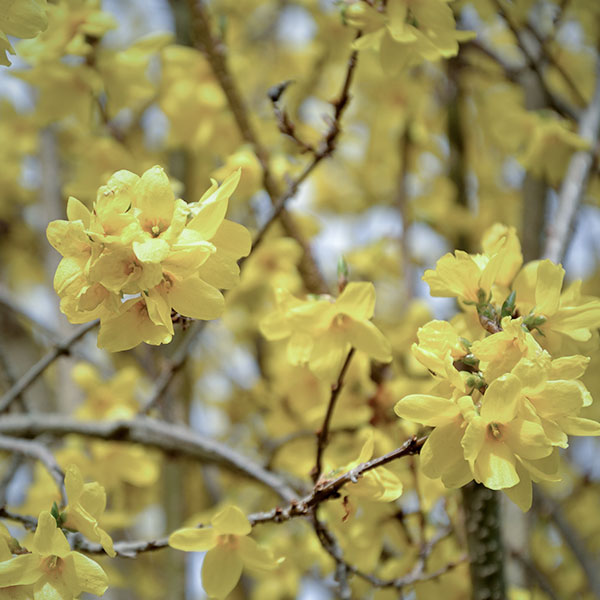
Forsythias pp.
Yello’ Spring is Calling
One of the earliest blooming shrubs, forsythia heralds spring with abundant yellow flowers that cover skinny stems which reach out in every direction! The yellow flowers can be as pale as butter, or as vibrant as the deepest gold. Regular pruning should happen in late spring, after blooming. Big renovations should wait until winter.
GROWING GUIDE: In winter, clear any dead or damaged wood. Forsythia blooms on mature, but not old, wood. Remove a few older, heavy branches every year to make room. Then, after blooming, in late-spring, prune back flowered stems to strong, outward-growing shoots.

Rosa hybrida
Roses, Roses, Roses
Hybrid tea roses, have large, well-formed flowers most associated with florist's roses, and are excellent garden plants in the Northwest. To encourage abundant flowers, you'll want to prune your roses in late February or early March after danger of frigid temperatures have passed. Be aggressive. Trim canes down to only 6-8" above the soil. Roses bloom on new growth only, so this aggressive pruning will maximize the blooming potential of your rose plant. After the first blooms fade, you can repeat this step to get a second round of blooms in late summer or early fall. Roses can be heavy feeders due to the aggressive pruning needed. You'll want to use a rose-specific fertilizer several times during the growing season to support healthy cane and flower development. A healthy plant, is also less likely to succumb to pests and disease.
GROWING GUIDE: Like the blueberry, the ideal shape for a hybrid tea rose bush is open-centered and vase-like. Prune out any branches that grow inward.In the fall time, after the last blooms fade, you'll want to dead-head the spent flowers, but avoid doing any major pruning.

